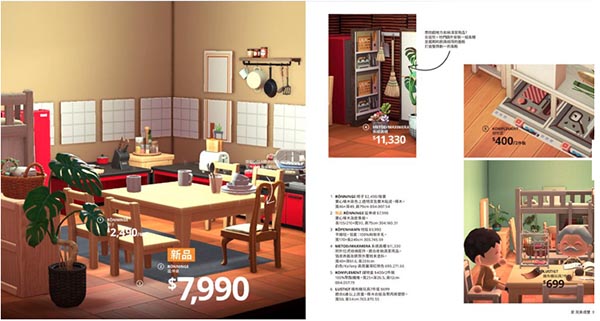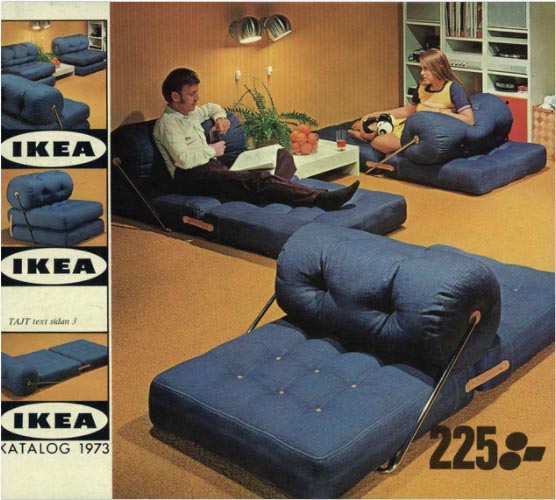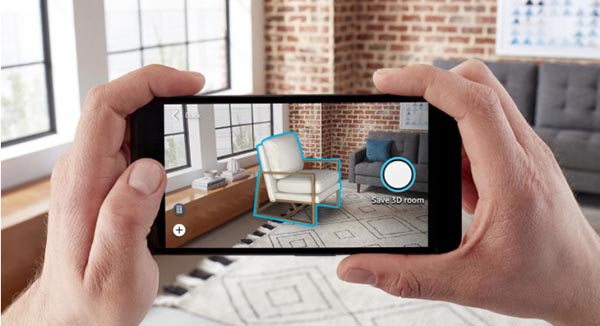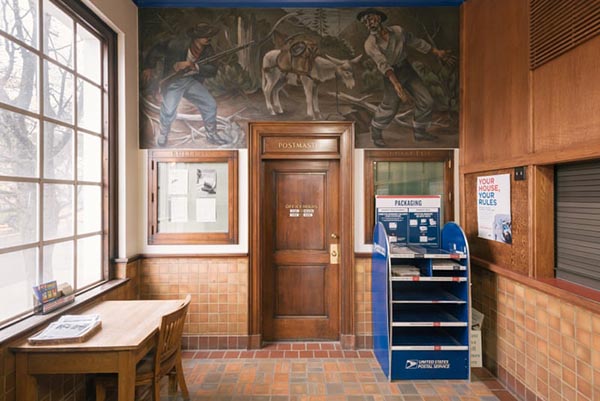I'm wearing headphones, glasses and a face mask. My ears have never been so busy.
— Richard Osman (@richardosman) August 25, 2020
Flower Power
Making the Invisible Visible: The Sourcing Group has joined forces with the UK’s Hidden Disabilities Sunflower to launch the Sunflower Program across America. People sometimes have disabilities that are not immediately apparent and thus when they are out and about in public may need some extra time, care, and patience.
Today, the fast growing sunflower lanyard initiative is helping adults and children with hidden disabilities experience more support in airports and supermarkets by acting as a discreet sign for staff that additional support or help may be required by the wearer of the lanyard. The lanyards, which are bright green in color and decorated with a sunflower design, are free of charge, and help identify people with additional needs and their families navigate their way through busy airports without having to specifically ask for assistance.
Royalty (Or Not)
I’d like to personally congratulate Beyoncé on making nine dollars. https://t.co/L1W5ncKfxC
— Matt Wallace (@MattFnWallace) August 22, 2020
IKEA Crossing
During the pandemic lockdown, Animal Crossing became a top pastime (we’ve heard), and now IKEA Taiwan has borrowed Animal Crossing characters and in-game items for several pages in its latest catalog. Says The Verge:
The Animal Crossing-themed catalog isn’t a perfect facsimile due to the limitations of the game’s interior design options. But it’s a damn good attempt. I particularly like how they’ve used the game’s colorful cast of characters and matched their outfits almost exactly to Ikea’s models.

For those who prefer old-school IKEA, via Bloomberg, the company, celebrating 70 years, has just uploaded a complete archive of its print catalogs dating back to 1950 on its IKEA Museum site (yes, there is such a thing as an IKEA Museum). You gotta love the 1970s.

Eyes, Bro
Life not disturbing enough? How about some menacing knick knacks? https://t.co/kKutw5YSBc
— J. Elvis Weinstein (@JElvisWeinstein) August 25, 2020
Furniture ARranging
Speaking of the Swedish retailer, we have written and spoken often about the iconic IKEA catalog, which uses augmented reality (AR) to let shoppers see how a piece of furniture will look in their homes. In a similar vein (but not one involving print), last week, Amazon launched a toolset called Room Decorator, which expands on the etailer’s AR features. Says CNET:
Amazon said Tuesday it's now expanded its AR capabilities with its Room Decorator tools, letting people add and arrange dozens of furniture pieces within the same room, save up to 100 of those designs and keep editing the arrangements on mobile or desktop. Amazon will also recommend items to combine in a design

We once bought an AR couch but had to send it back—it had a Pokémon living in it.
Layered
We’ve heard the best mask is one with many layers ?? https://t.co/ZMAFn0qLih
— Adobe Creative Cloud (@creativecloud) August 25, 2020
Food for Thought (But Not Eating)
Laughing Squid pointed us to the work of Japanese thread artist Ipnot, who has been working on a series of intricate, highly realistic embroidered foods.

On the Instagram machine, she writes, “An exhibit of my embroidered pizza will be held in Abu Dhabi with theme, ‘8th DISCOVER THE ONE JAPANESE ART 2019’ on 8 days of Oct. 2 to 10 in this year. (closed on Fridays) The exhibition will take place in Etihad Modern Art Gallery. I hope you will have time to take a look on my art, ‘pizza of embroidery as baked well’.”
Weird Food for Thought
WTF is a “chow mein sandwich”????? https://t.co/ygzxuZEPXg
— Charles P. Pierce (@CharlesPPierce) August 22, 2020
Even Weirder Food for Thought
Speaking of weird food, Boing Boing offers a bit of advice regarding “What definitely not to name your seafood restaurant during a global pandemic.”

Or ever, really.
Eye in the Sky
Over the years, we have grown used to the fact that, should we search for, say, a pair of shoes online, for weeks we will see nothing but ads for shoes, which then doggedly follow us around the Internet—even after we’ve bought the bloody things. (Sometimes we get the sense that we need to shop for higher-end products just so that we can get a better class of ad following us around.)
Anyway, it’s good to know that ad stalking is now coming to the offline world.
This turned up in our Newsfeed yesterday, but the LA Times expands upon a new Clear Channel Outdoor initiative that is rolling out new billboard technology that can tell advertisers “where people go and what they do after seeing a particular billboard.” The initial rollout is in Europe:
The company calls its technology Radar. The system, Clear Channel says, “leverages anonymous, aggregated mobile location data to help advertisers understand consumer mobility, behavior and true campaign impact.”
An animated video for Radar appears to depict people on foot and in cars passing a Clear Channel billboard and connecting automatically via Wi-Fi, providing marketers with “highly customized solutions” to help them “connect with the right customers at the right time and place.”
...
Jason King, a Clear Channel spokesman, acknowledged to me that the company “does not equip its billboards with technology aimed at tracking individuals.”
Rather, Clear Channel gathers location and tracking information from multiple sources — apps, data firms — and then analyzes the info for insights about how people behave after passing a Clear Channel billboard.
The idea is to be able to tell advertising clients that a consumer is likely to visit the client’s business after being exposed to a billboard touting the client’s products or services, or to market to that consumer based on their location.
...
Clear Channel is taking this capability up a level by creating a bridge between a consumer’s location and their exposure to an outdoor marketing pitch.
Now advertisers can go beyond just passively plastering a message on a billboard. They can follow you after you’ve seen the ad, and watch where you go and what you do.
Odieous
In 1998 "G-mail" was an email service offered by the cartoon Garfield, with the slogan "email with cattitude".
— Quite Interesting (@qikipedia) August 18, 2020
Butting In
Our fun fact of the week is that, over at Boing Boing, we learned that the term “buttload” is actually a formal unit of measurement. Sort of:
A butt, also known as a pipe, is a unit of measure for English Brewery Cask Units and English Wine Cask Units. It's the second-largest barrel size, equal to half a tun, which was typically 252 Imperial Gallons (although that exact quantity has changed throughout history; current standards place an English Tun at 259 US gallons or 216 Imperial Gallons).
No word on the status of s***load.
Making Book (Or Not)
Sometimes we as an industry just can't win. If there had been one bright spot in this whole pandemic, it's that sales of print books had skyrocketed. For example, says the NY Times:
Unit sales of print books are up more than 5 percent over last year, and sales have accelerated over the summer. From early June to mid-August, print sales were up more than 12 percent over the previous 10 weeks, according to NPD BookScan.
Unfortunately, that, as well as the fact that publishers delayed their spring releases until the fall, means that book publishers have a looming capacity issue.
Books that were bumped from spring and early summer are landing all at once, colliding with long-planned fall releases and making this one of the most crowded fall publishing seasons ever. And now publishers are confronting a new hurdle: how to print all those books.
Then there's this:
The two largest printing companies in the United States, Quad and LSC Communications, have been under intense financial strain, a situation that has grown worse during the pandemic. LSC declared bankruptcy in April, and the company’s sales fell nearly 40 percent in the fiscal quarter that ended June 30, a drop that the company attributed partly to the closure of retailers during the pandemic and the steep fall of educational book sales. In September, LSC’s assets will be put up for auction. Quad’s book printing business is also up for sale; this spring, the company had to temporarily shut down its printers at three plants due to the pandemic.
...
A backlog at the printers can have a ripple effect up and down the supply chain, causing delays at warehouses and slower delivery to booksellers, who may lose out on sales when customers can’t find the books they want.
I, Bully
A new social ill on the horizon: robot abuse. Says IEEEE’s Spectrum: “As humans encounter more and more robots in public spaces, robot abuse is likely to get increasingly frequent. Abuse can take many forms, from more benign behaviors like deliberately getting in the way of autonomous delivery robots to see what happens, to violent and destructive attacks.” One possible solution? Sad bystander robots. “Researchers at the Interactive Machines Group at Yale University have run an experiment to determine whether emotionally expressive bystander robots might be able to prompt nearby humans into stepping in to prevent robot abuse.” And, yes, they did indeed find that when a bystander robot expressed sadness, humans were more likely to step in and stop the abuse.
Scoff if you will, but we have to admit, the saga of the hitchBOT is kind of a sad one.
Plan On It
I feel like you could have planned a less repetitive sentence. https://t.co/2y1QIZBsr3
— (((Josh Malina))) (@JoshMalina) August 25, 2020
Postal Art
The Guardian last week had a photo essay looking at the surviving 1930s post office murals. USPS historians and other aficionados recall that one of the programs implemented as part of FDR’s New Deal was the Treasury Section of the Fine Arts, launched in 1934 by Treasury Secretary Henry Morganthau. Under the TSFA, 1% of a post office’s construction budget was allocated to creating art, and the result was that more than 1,200 post office murals were painted.
The mission of the post office murals was multifaceted – to boost morale in communities, employ artists by the thousands and create world-class art that was accessible to everyone. The murals revolved around local folklore, landscapes, industry and, unsurprisingly, mail delivery. They told the story of life across the United States.
Writes photographer Justin Hamel:
I’ve now photographed about 325 individual murals though I don’t have an actual tally.
From the magnificent depiction of steam engines being built in the post office in Willard, Ohio, to a serene pondside landscape hanging in the sheriff’s office in Dale county, Alabama, or covered wagons crossing a stream in Crawford, Nebraska, each new mural I discovered offered an engaging view into the local histories of the world around us.
In small towns everywhere, history was painted by people who arrived in America seeking a better life. Many of the artists employed by the Section were immigrants. José Aceves, a Mexican-American artist, painted the classic western scene Big City News in Borger, Texas.
New and Old Methods of Transportation, showing how the rapid pace at which technology was changing rural towns, was painted by the Polish-American Bernard Zakheim in Mineola, Texas. In a Virginia post office lobby, you’ll find a factory valley landscape entitled Appalachia by Lucienne Bloch, a Swiss-born immigrant.
Maybe you have a TSFA mural in your own local post office.

Discovery by Fletcher Martin hangs in the Kellogg, Ida., post office. Photograph: Justin Hamel.
Life’s Work
My entire life https://t.co/uTcwz0XK4L
— Mary Aspinall-Miles (@MAM12CP) August 24, 2020
Interstellar Autobahn
We have not seen this yet, but last week Netflix dropped a short documentary about John Shepherd, who was on a mission to contact extraterrestrials and hopefully encourage them to visit Earth (this would be the wrong year for that!). Ultimately, he tried luring them using music.
[F]rom an early age, John became consumed with trying to communicate with otherworldly beings. To do this, he invented and constructed a wide array of complex contraptions that beamed “non-commercial music”—jazz, reggae, Afropop, Kraftwerk, Tangerine Dream—and which soon took over his grandparents’ residence, where he lived. So big (and profuse) did these behemoths become that he eventually had to build an addition to the house in order to continue expanding his operation, which included a two story-high deep space transmitter, and was given the official name S.T.R.A.T. (Special Telemetry Research and Tracking).
Maybe the guy should be a DJ; that sounds like a great FM radio station from the 70s. At any rate, he didn’t find aliens, but at the end of John Was Trying to Contact Aliens, it turns out that in his search, he did find his soul mate.
Album Drop
I’ve dropped an album. pic.twitter.com/3J9HkWtXdv
— Tim Vine (@RealTimVine) August 24, 2020
Combination Lock
An interesting story at Kottke.org that is a combination, as it were, of kind of cool and a little unsettling.
It sounds unlikely, but security researchers say they have proven that the series of audible, metallic clicks made as a key penetrates a lock can now be deciphered by signal processing software to reveal the precise shape of the sequence of ridges on the key’s shaft. Knowing this (the actual cut of your key), a working copy of it can then be three-dimensionally (3D) printed.
And you don’t even need an elaborate microphone—a smartphone or smart doorbell will work fine. So the next time you unlock your door, you may want to do it as quietly as possible.
Uneasy Feeli—Hey!
— Harold Lepidus (@DylanExaminer) August 23, 2020
Romancing the Stone
One of the most important finds in archaeology was the Rosetta Stone. Dating from 196 B.C. during Egypt’s Ptolemaic dynasty, it was inscribed in three languages: hieroglyphs, which was the formal Egyptian writing system; demotic, a script used for daily purposes; and Ancient Greek, which was the language used by the government, as at the time Egypt was run by Greco-Macedonian rulers after Egypt’s conquest by Alexander the Great. After the fourth century A.D., hieroglyphs had gone out of use as did, not long after, any knowledge of how to read or write them—until the discovery of the Rosetta Stone, which turned out to be a real...um, Rosetta Stone.
Still, even with a handy translation it was no easy task. Over The Guardian this week, some papers uncovered in the British Museum shed some light on how Thomas Young, an English medical doctor, attacked the task—all the while racing to finish his translation ahead of his rival, French historian and linguist Jean-François Champollion.
Young could read Ancient Greek and spent his six-week summer holiday in Worthing in 1814 cutting up individual lines into strips, attempting to match them with corresponding versions. The notes show that he was arranging and rearranging the pieces.
...
while previous scholars had seen the material, its significance had been overlooked: “It gives you a clear picture of the almost mathematical cast of mind that he had when he was faced with these obscure signs. He went into those things literally as though it was a mathematical problem.”
But, ah, c’est dommage: “It was Champollion who realised that hieroglyphs recorded the sound of the Egyptian language and who pieced together the alphabet.”
By the way, what does the Rosetta Stone actually say? “Its text is a decree passed by a council of priests affirming the royal cult of the 13-year-old Ptolemy V on the first anniversary of his coronation in 196BC.” So, basically, it was a press release. Kind of puts our newsfeed into perspective...
The Scary Door
Feels right. pic.twitter.com/PaX5NyWCdV
— yvette nicole brown (@YNB) August 22, 2020
“Clean Up in Uber 4”
Whilst we don’t spend an awful lot of time in Ubers these days, as a public service, we should warn you about an upsetting new scam being perpetrated by shady Uber drivers: vomit fraud. We are alas not making that up. Says the Chicago Tribune:
Passengers request Uber cars, which deliver them to their destination. So far so good.
But soon the passenger receives a note from Uber reporting an "adjustment" in the bill and an extra charge that can range from $80 to $150, depending on the driver's degree of crookedness.
Attempting to contact Uber itself to correct this is fraught with frustration.
The first reply usually goes something like this: "I understand that it can be disconcerting to receive adjustments to the tariff after your trip ended … In this case, your driver notified us that during your trip there was an incident in the vehicle and therefore a cleanup fee of $150 was added."
The message is accompanied by photos of the alleged incident — vomit in the vehicle. The Uber driver had sent the images to the company, which considered them sufficient evidence to add the cleanup charge to the bill.
...
Some passengers have to send three or four emails to resolve their complaints. They must tell Uber that there was no incident, and then wait for the company to investigate and, if it agrees, reimburse their money.
We’re not sure how one can provide evidence of not having vomited, or that that it’s not one’s own. (This is getting more disgusting as we go on...
Anyway, we are reminded of the sad fate of Spinal Tap’s second drummer, who “choked on vomit,” although they never found out whose. After all, “you can’t dust for vomit.”
This Week in Printing, Publishing, and Media History
August 24
1456: The printing of the Gutenberg Bible is completed.
1891: Thomas Edison patents the motion picture camera.
1995: Microsoft Windows 95 is released to the public in North America.
1998: First radio-frequency identification (RFID) human implantation is tested in the United Kingdom.
August 25
1609: Galileo Galilei demonstrates his first telescope to Venetian lawmakers.
1835: The first Great Moon Hoax article is published in The New York Sun, announcing the discovery of life and civilization on the Moon. (No one would ever fall for something like that today.)
1954: English singer-songwriter, guitarist, and producer Elvis Costello (né Declan MacManus) born.
1991: Linus Torvalds announces the first version of what will become Linux.
2012: Voyager 1 spacecraft enters interstellar space becoming the first man-made object to do so.
August 26
1740: French inventor (hot air balloon) Joseph-Michel Montgolfier born.
1873: American engineer and academic and inventor the Audion tube Lee de Forest born.
1918: American mathematician Katherine Johnson (née Coleman) born.
Remembering @NASA trailblazer Katherine Johnson on her birthday! ?? She will always be known as a pioneer for women and diversity in #STEM.♥? In honor of her birthday 102 years ago, learn more about her life and legacy: https://t.co/BSYhYsmTQ6 pic.twitter.com/wU0EJxZOqM
— NASA_Langley (@NASA_Langley) August 26, 2020
1952: American journalist and puzzle creator Will Shortz born.
August 27
1770: German philosopher and academic Georg Wilhelm Friedrich Hegel born.
1871: American novelist and journalist Theodore Dreiser born.
1933: The first Afrikaans Bible is introduced during a Bible Festival in Bloemfontein.
1953: Canadian singer-songwriter, guitarist, and producer Alex Lifeson (né Alexandar Zivojinovich) born.
August 28
1845: The first issue of Scientific American magazine is published.
1898: Caleb Bradham’s beverage “Brad's Drink” is renamed “Pepsi-Cola.” Probably a good idea.
August 29
1831: Michael Faraday discovers electromagnetic induction.
1997: Netflix is launched as an internet DVD rental service.
August 30
1797: Mary Shelley, English novelist (Frankenstein) and playwright, born.
1909: Burgess Shale fossils are discovered by Charles Doolittle Walcott, which would serve as the subject for one of the best science books ever written: Stephen Jay Gould’s Wonderful Life.
1956: Comedian, actor, producer, and screenwriter Frank Conniff (“TV’s Frank” from Mystery Science Theater 3000), born.
Today is my birthday but due to the ongoing pandemic I’ve decided to postpone actually getting a year older until 2021
— Joseph Scrimshaw (@JosephScrimshaw) August 17, 2020










Discussion
Join the discussion Sign In or Become a Member, doing so is simple and free